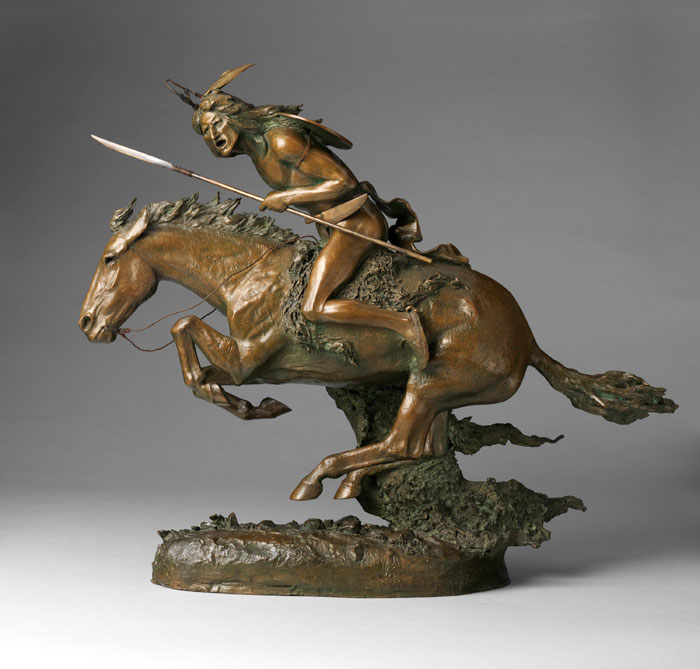Frederic Remington’s The Cheyenne is considered one of the most important works in the Denver Art Museum's western American art collection. The title, The Cheyenne, gives the tribal affiliation of the rider, but the rest of the narrative has been left to the viewer’s imagination. He could be in pursuit of startled prey, calling back to his fellow hunters to excite fervor for the chase, or perhaps he is the prey, and his head turns slightly to look at his pursuer. However, this sculpture has more to tell the viewer than a simple narrative, and its greater significance may be understood with a little insight into how Remington designed and created this work.

Frederic Remington, The Cheyenne, modeled 1901 (cast by 1903). Bronze; 20 7/8 x 24 3/8 x 7 1/2 in. Denver Art Museum: funds from William D. Hewit Charitable Annuity Trust, 1981.14A-B
Illusion of Movement
Already a well-established painter and illustrator, Remington began working with bronze in 1895. The Cheyenne was his sixth sculpture and his most daring design. With all feet off the ground, the galloping horse “burns the air,” as described by Remington in a letter to his friend and author of western novels Owen Wister. While other artists stabilized equine subjects by placing at least one foot on the ground, Remington floats all four, thus capturing the horse mid-stride to create the illusion of movement.
For support, he sculpted a buffalo hide used as a saddle that slides down the horse’s side and trails on the ground. Such an ingenious method of disguising the support demonstrates Remington’s mastery of design and his creativity in approaching the challenges of casting a three-dimensional sculpture in bronze.
Crisp Detail
Remington worked with the foundry Roman Bronze Works to create The Cheyenne. He used the lost-wax method, which allows for an exceptional range of detail and texture. In this process, the artist can revisit the original model of the sculpture (from which molds and ultimately casts are made) and make alterations. The downside to this process is that the sculpture tends to lose definition over multiple castings.
The Cheyenne at the DAM was Remington’s third cast, making it one of the most important and highly valued for its crisp detail. Remington created 23 or 24 casts of The Cheyenne before he died in 1909. In comparison to later versions, where the rider becomes a gaunt specter riding a gangly horse, this sculpture beholds all the energy and rugged beauty Remington envisioned it to have when he first created it in 1901. With everything considered, it is easy to see why the Petrie Institute of Western American Art at the DAM would consider this sculpture one of its most important acquisitions to date.
See The Cheyenne in Stampede: Animals in Art through May 19, 2019.

